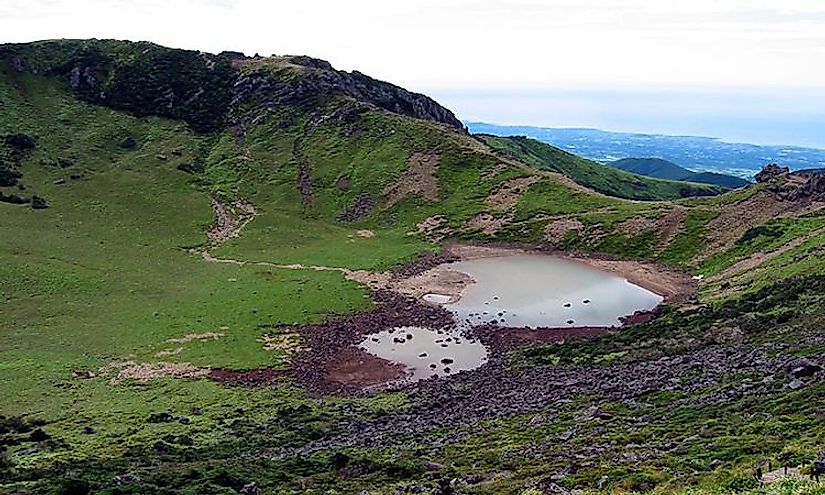South Korea's National Parks: Role In Protecting The Biodiversity Of The Country

South Korea has 17 mountainous, four marine and coastal, and one historical national park. The country has a remarkable landscape, 75% of which is covered by mountain ranges. National parks in South Korea portray the beauty and uniqueness of the country. The nation’s parks occupy 3.7% of the land area and 6.6% of the total area. Jirisan National Park, located in the Southwest is the largest and oldest of the national parks in the country. The Korea National Park Service which began operations in 1987 is mandated with the management of the parks.
The Wildlife Of South Korea
South Korea is home to nearly 100 mammal species which include the Amur leopard, deer, Siberian tiger, otters, martens, Asian black bear, brown bear, seals, lynx, weasels, bats, gray wolf, and the red fox. The surrounding waters provide habitats for whale and dolphin species such as the gray whale, sei whale, Indo-Pacific bottlenose dolphin, and Risso’s dolphin as well as species of the porpoise. 370 bird species inhabit South Korea and they include geese, cranes, crested ibis, tiger shrike, Baikal teal, waterfowl, common pheasant, swans, and the Yellow-rumped Flycatchers. South Korea prides in populations of fish species including the Manchurian trout, black shiner, Korean taimen, loach, Korean stumpy bullhead, Somjin bitterling.
The Threats To South Korea’s Wildlife
While South Korea is one of the developed countries in the world, industrialization has negatively affected the environment. Industrial and sewage pollution have reduced the quality of water habitats and harmed aquatic animals. Global warming has rendered animals vulnerable to changing climatic and environmental conditions. Previously, South Korea, which lies on the Korean peninsula, was home to significant populations of large mammals including bears, tigers, and lynx. These animals now exist in small communities and are nearly extinct since their habitats have been shrinking over time in place of human settlement. Increasing urban development and encroachment further threaten the country’s wildlife.
The Need To Protect: Establishment Of National Parks In South Korea
By the mid 20th century, wildlife in Korea had experienced reduced populations due to hunting, loss of habitat, and the ravages of Korean War. There was a clear need for biodiversity conservation and a national park was founded in 1967 that is the Jirisan National Park. The park was primarily aimed at the preservation of the Asiatic black bear. The largest marine park in the country is the Dadohaehaesang National Park. The national parks have facilitated the sustainability of animal species which would otherwise be extinct due to external threats. The Korea National Park Service implements professional management policies to ensure that wildlife is protected efficiently in the parks.
The Current Role Played By South Korea’s National Parks
South Korea’s national parks showcase the country’s landscape as well as historical and cultural sites. The parks are unique since they display Buddhist Sites across the country. The parks protect natural features ranging from mountain ranges, cliffs, rock formations, valleys, hills, and wetlands. The parks offer opportunities for visitors to engage in activities such as hiking, camping, birdwatching, sightseeing, and photography. Flora and fauna found in the parks also involve scientists carrying out research.
South Korea's National Parks: Role In Protecting The Biodiversity Of The Country
| Rank | Name (English, hangul, hanja) | Location | Designated | Area | Land type |
|---|---|---|---|---|---|
| 1 | Dadohaehaesang | Jeollanam-do | 1981 | 2,325 km2 (898 sq mi) | Marine and coastal |
| 2 | Hallyeohaesang | Jeollanam-do, Gyeongsangnam-do | 1968 | 545 km2 (210 sq mi) | Marine and coastal |
| 3 | Jirisan | Jeollanam-do, Jeollabuk-do, Gyeongsangnam-do | 1967 | 472 km2 (182 sq mi) | Mountainous |
| 4 | Seoraksan | Gangwon-do | 1970 | 398 km2 (154 sq mi) | Mountainous |
| 5 | Taeanhaean | Chungcheongnam-do | 1978 | 326 km2 (126 sq mi) | Marine and coastal |
| 6 | Sobaeksan | Chungcheongbuk-do, Gyeongsangbuk-do | 1987 | 322 km2 (124 sq mi) | Mountainous |
| 7 | Odaesan | Gangwon-do | 1975 | 304 km2 (117 sq mi) | Mountainous |
| 8 | Woraksan | Chungcheongbuk-do, Gyeongsangbuk-do | 1984 | 288 km2 (111 sq mi) | Mountainous |
| 9 | Songnisan | Chungcheongbuk-do, Gyeongsangbuk-do | 1970 | 274 km2 (106 sq mi) | Mountainous |
| 10 | Deogyusan | Jeollabuk-do, Gyeongsangnam-do | 1975 | 232 km2 (90 sq mi) | Mountainous |
| 11 | Chiaksan | Gangwon-do | 1984 | 182 km2 (70 sq mi) | Mountainous |
| 12 | Byeonsan-bando | Jeollabuk-do | 1988 | 155 km2 (60 sq mi) | Marine and coastal |
| 13 | Hallasan | Jeju-do | 1970 | 153 km2 (59 sq mi) | Mountainous |
| 14 | Gyeongju | Gyeongsangbuk-do | 1968 | 137 km2 (53 sq mi) | Historical |
| 15 | Juwangsan | Gyeongsangbuk-do | 1976 | 107 km2 (41 sq mi) | Mountainous |
| 16 | Naejangsan | Jeollanam-do, Jeollabuk-do | 1971 | 81 km2 (31 sq mi) | Mountainous |
| 17 | Bukhansan | Seoul, Gyeonggi | 1983 | 80 km2 (31 sq mi) | Mountainous |
| 18 | Gayasan | Gyeongsangnam-do, Gyeongsangbuk-do | 1972 | 77 km2 (30 sq mi) | Mountainous |
| 19 | Mudeungsan | Gwangju, Jeollanam-do | 2012 | 75 km2 (29 sq mi) | Mountainous |
| 20 | Taebaeksan | Yeongwol, Jeongseon, Taebaek, Gangwon Bonghwa, Gyeongsangbuk-do | 2016 | 70 km2 (27 sq mi) | Mountainous |
| 21 | Gyeryongsan | Chungcheongnam-do, Daejeon | 1968 | 65 km2 (25 sq mi) | Mountainous |
| 22 | Wolchulsan | Jeollanam-do | 1988 | 56 km2 (22 sq mi) | Mountainous |







